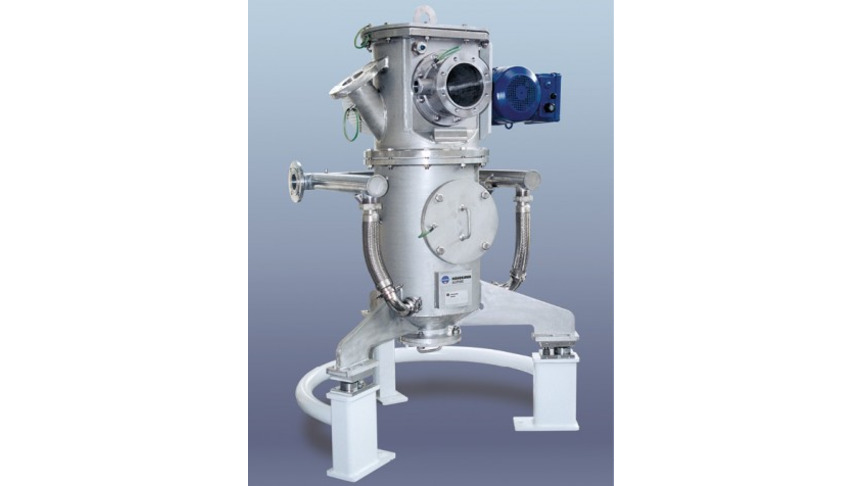- Industries & Machines Industries & Machines
- IIoT IIoT
- Service-Toll Processing Service-Toll Processing
- Material Material
- News News
- IR Information IR Information
-
Sustainability
Sustainability
Sustainability
- Introduction
- Sustaibality Policy - Mission Statement
- Editorial Policy
- Materiality & Strategy
- Technological contribution to a sustainable global environment
- Contributions towards a safer, more secure and prosperous society
- Sophistication of governance that supports business
- ESG Data Collection
- Sustainable Business Management ~ Finance
- Infromation Disclosure Based on TCFD Recommendations
- Jobs and Careers Jobs and Careers
-
About Us
About Us
About Us
- Corporate Vision
- Greetings (Company Introduction)
- Corporate Overview
- Corporate Profile
- Business Areas and Strengths
- Corporate History
- Hosokawa Micron Group
- Domestic Facilities
- Overseas Subsidiaries (Asia)
- Overseas Subsidiaries (Europe)
- Overseas Subsidiaries (America)
- Asian Agents
- Powder Technology Research Institute
- Industrial Property Rights
- Journals and Books
- Technical Information
- Annual Publication "Micromeritics"
- Compliance Charter
- Privacy Policy
- Cookie Policy
- Quality Principle

Industries & Machines
- TOP
- Industries & Machines
- Machines Search
- PULVIS PV
PULVIS PV
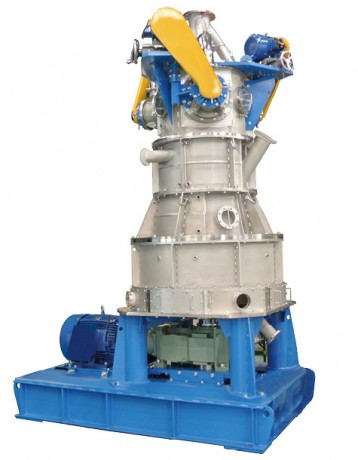
Summary
The Pulvis was developed as a dry type energy-efficient ultra-fine agitating media mill with integrated classifier.
To obtain particles of sub-micron size with impact type mills or jet mills very large milling energy is required. On the other hand, media agitating mill such as ball mills is possible to grind down to sub-micron range with energy saving features, however, problem was that the particle size distributions is rather broad.
To solve this problem by integrating a classifier in the agitating media mill it is now possible to continuously produce submicron size particles.
(PULVIS is a registered trademark of HOSOKAWA MICRON CORPORATION in Japan)
Principle
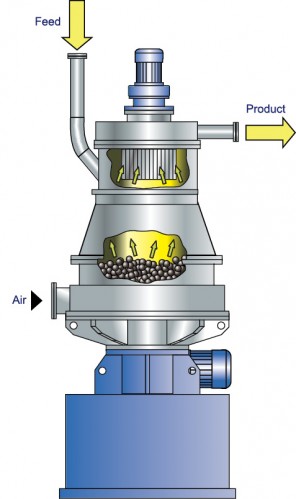
Fig.1 Structure
The milling part is located at the bottom of the machine. Feed material is ground by agitated media that combine impact grinding and attrition. Here, media surface covered with particles receive impact, compression, shear and attrition effect. Therefore effective grinding with less energy can be done compared to impact type mills.
The ground particles are conveyed via the gas flow injected from the bottom side to classifying zone, and only the particles finer than cut point passes the classifier and collected as products. Coarse particles are descends down to milling section and re-ground.
Since the grinding by media agitation and the classification by air stream is simultaneously done under dry conditions, drying process can be eliminated and thus there is no agglomeration problem, which is different to the case of using wet media agitating mill. The product contact part such as grinding media, casing, and classifying rotor can be manufactured in ceramics to minimize the metal contamination in the product.
Balls motion in the PULVIS
Features
- Energy efficient
- Possible to grind down to ultra fine particles(sub-micron)
- Easy particle size adjustment
- Ceramics construction possible for powder contact part
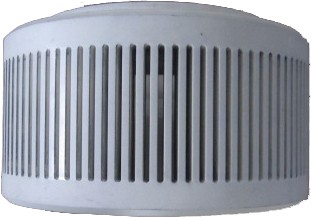
Fig.2 Classfying wheel made of alumina
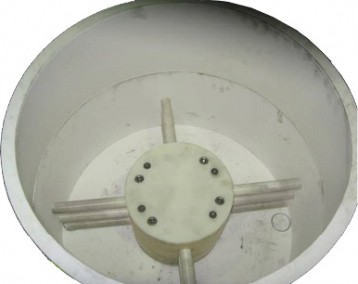
Fig.3 Grinding chamber
Applications
- Ceramics such as glass, silica
- Battery materials such as iron phosphate
- Minerals such as iron ore
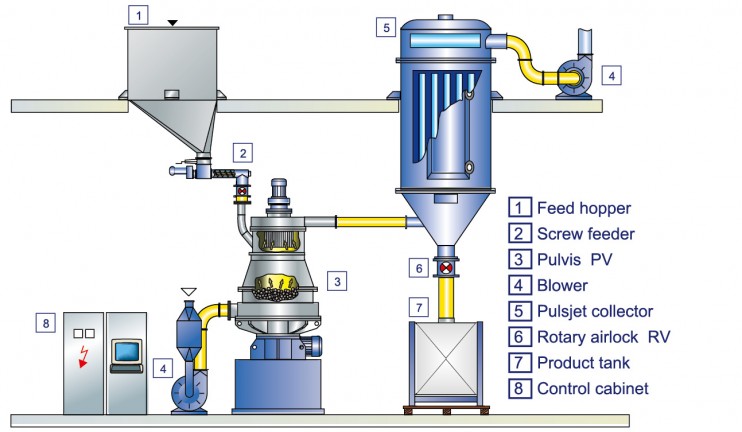
Fig.4 Flow
Related equipments

Feel free to contact us. if you have any questions or concerns.

